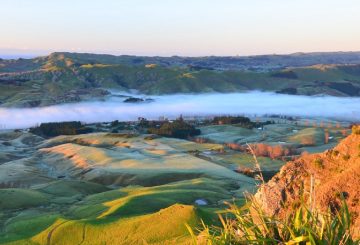Te Arawa와 Sealord는 로토루아 지역의 비생산적인 토지를 자생림으로 탈바꿈시키기 위해 협력하고 있다.씨로드는 씨로드 활동으로 인한 탄소 일부를 상쇄하기 위해 탄소 상쇄 프로그램인 아라 라카우 (Ara Rākau) 에 10년 동안 천만 달러를 투자할 예정이다.
테아라와 어업과 뉴질랜드 탄소 농업 (Carbon Farming) 이 설계한 이 프로젝트는 토지 이용을 극대화하고, 일자리를 제공하고, 가족 성과를 개선하고, 테아라와 호수의 수질을 포함한 지역 환경 보건을 증진하는 것을 목표로 합니다.
테아라와 수산 CEO인 크리스 카라메아 인슬리 (Chris Karamea Insley) 는 탄소 경제가 마오리족에 미치는 혜택과 뉴질랜드의 전반적인 기후 목표를 강조한다.크리스는 이 프로그램이 경제, 문화, 사회, 환경에 도움이 되는 마오리족에게 중요한 기회라고 말했다.
씨로드 CEO인 더그 폴린 (Doug Paulin) 은 지속가능성에 대한 회사의 노력과 2019년 이후 탄소 발자국을 23.7% 줄이려는 노력을 강조했습니다.Doug는 사업 내에서 탄소 배출량을 대폭 줄이는 데 한계가 있다는 점을 인정하고 이번 파트너십을 탄소 배출량을 더욱 상쇄하기 위한 장기 계획으로 보고 있습니다.
물리적 식목 및 산림 관리는 뉴질랜드 탄소 농업이 담당할 것입니다.맷 월시 (Matt Walsh) 국장은 이번 파트너십이 기후 변화와 생물 다양성 손실 문제를 해결할 수 있는 기회를 제공한다는 점에서 기대감을 표명했다.이 프로젝트는 마오리 지식을 통합하여 모범 사례를 보장하고 생물 다양성이 풍부한 토착 환경으로 전환하여 환경 및 지역 개발 혜택을 제공하는 것을 목표로
합니다.

















































-660x440.jpg)











